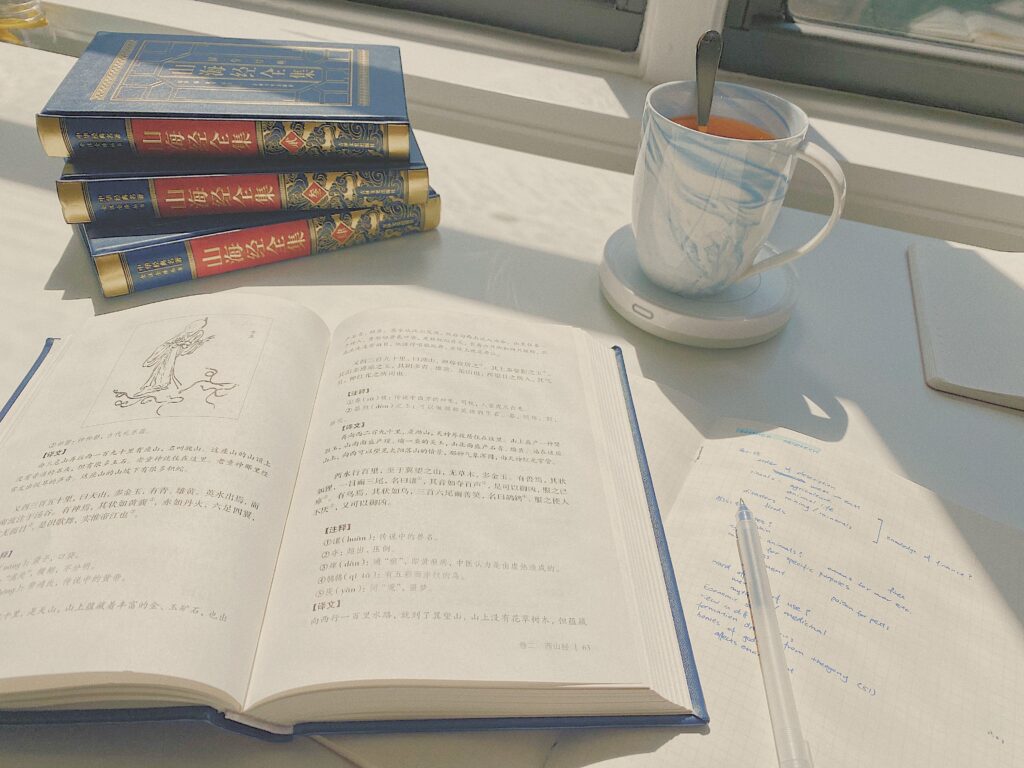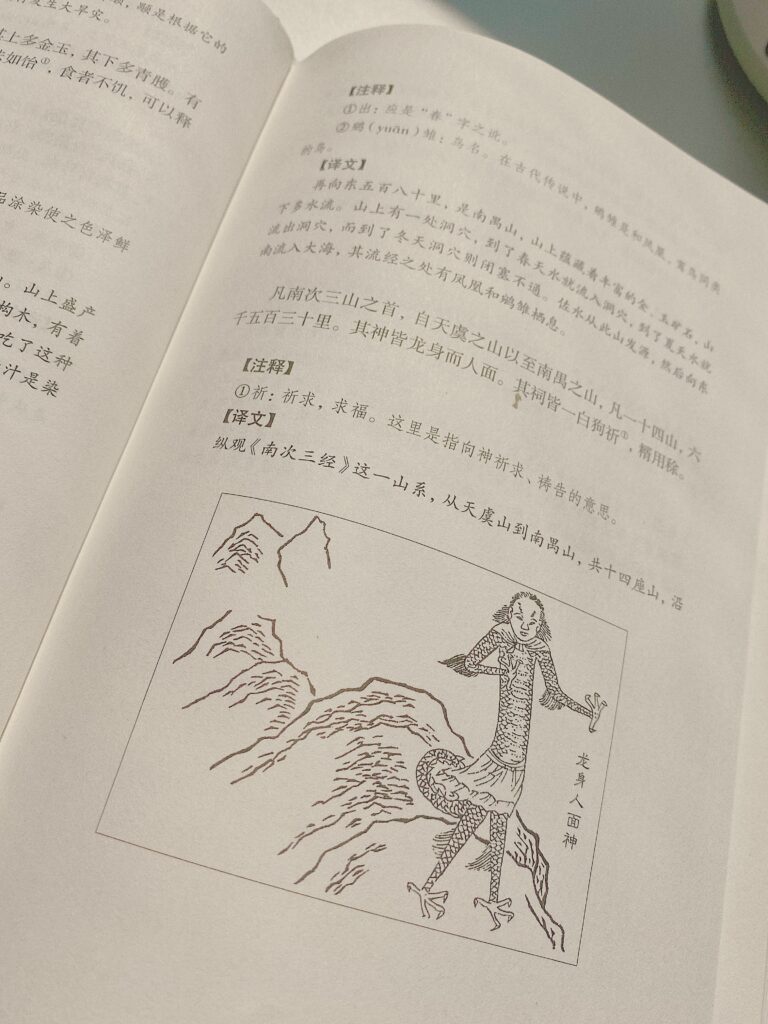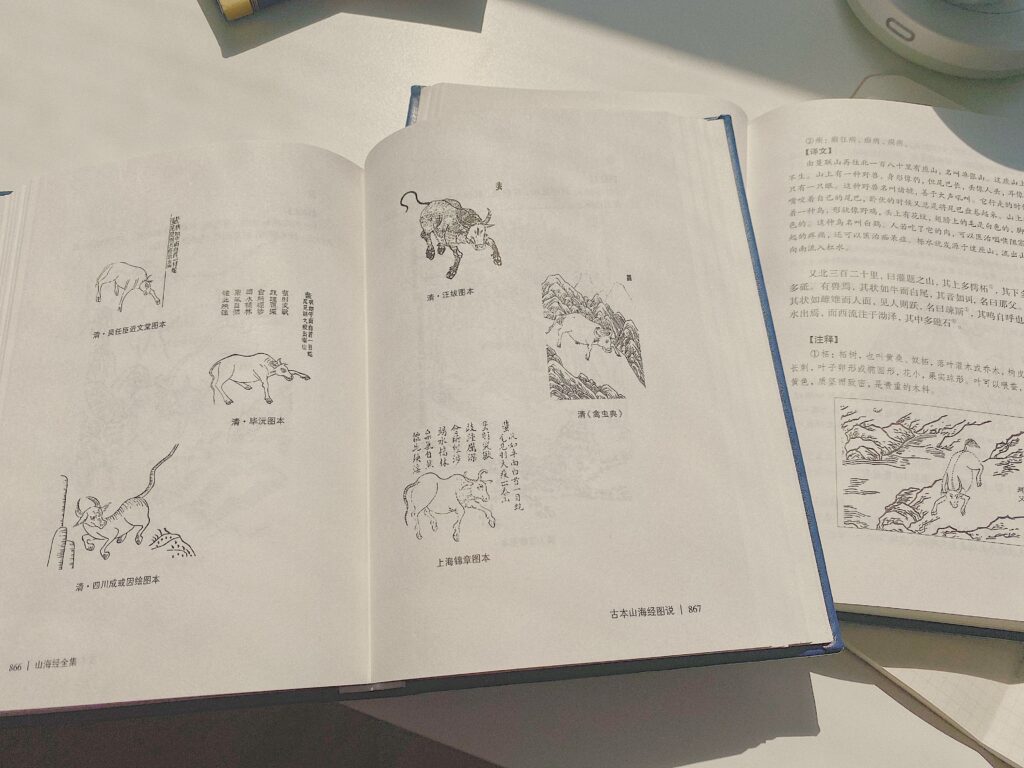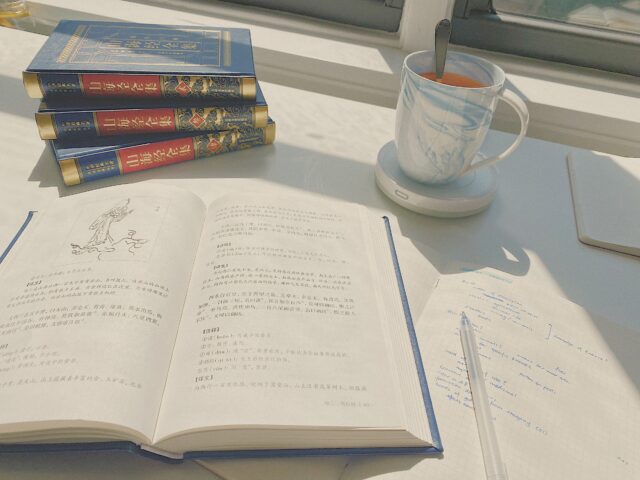
A Classic of Mountains and seas (山海经) is a central foundation for my research project. For all of its influence on Chinese literature and art, the Classic is hardly ever read as text on its own, even though its existence and pieces of its contents permeate the public consciousness. As I am reading through the entirety of Classic for the first time myself, here are some thoughts I had and threads I might pick up in later research about surrounding contexts:
An interesting element in the text is that at the end of every section (usually separated by a certain geographical range), the text gives a surprisingly detailed description of the local deities and rituals. On the whole, people of a certain geographical range worship the same deity that is specific to that locale and conduct ceremonies with similar items of tribute. Interestingly, these deities morph in appearance–at any given locale, their deity looks more like that of their neighboring regions than those far away. I think these deities could be an interesting subject to look into for drawing connections between myth, geography, and identity. The items of tribute are also of anthropological interest, since the grain, livestock, and precious minerals offered could say a lot about the physical environment of a region.

Though the illustrations in the Classic are much later additions to the text, I do think they did a lot to inform the imagination of creatives. The particular version of the Classic that I picked up actually has a compilation of illustration that were created in different periods to accompany the text, which might be another topic to look into.

Because of its density, I’m a little behind the progress I anticipated and am still making my way through the text. However, I think spending a little more time on the Classic may be helpful since I anticipate much of the sources in later periods will reference back to it, and a thorough look at the text would give me a better idea of the basis they are working with.
